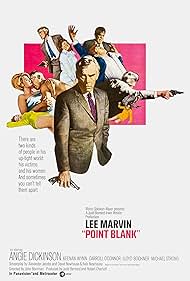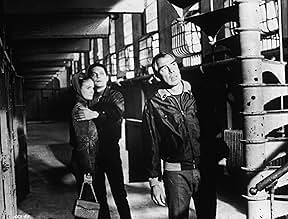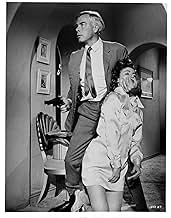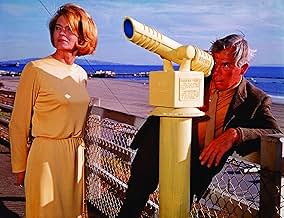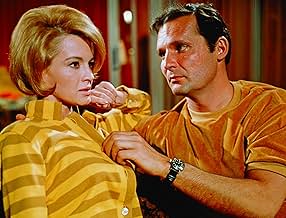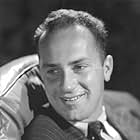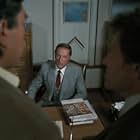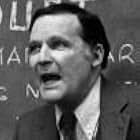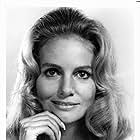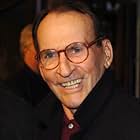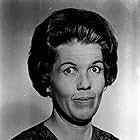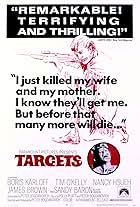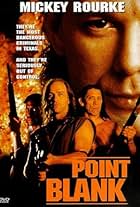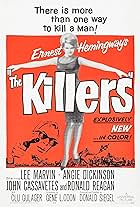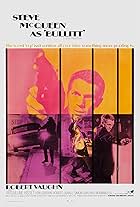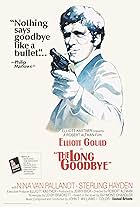After being double-crossed and left for dead, a mysterious man named Walker single-mindedly tries to retrieve the money that was stolen from him.After being double-crossed and left for dead, a mysterious man named Walker single-mindedly tries to retrieve the money that was stolen from him.After being double-crossed and left for dead, a mysterious man named Walker single-mindedly tries to retrieve the money that was stolen from him.
- Awards
- 1 win
Storyline
Did you know
- TriviaWhen James Sikking auditioned for the role of the assassin, Sir John Boorman rejected him and told him that his face was too nice for a killer. For the next week, though, Boorman would look out his office window at MGM and see Sikking standing outside, partially concealed by a bush or a column, just watching him menacingly. The director eventually walked out and offered him the part.
- GoofsAfter Chris leaves Walker in her apartment, Reese is shown standing and staring through a large plate glass window as though he is looking outside, but the reflection of a red camera light can be seen in the glass.
- Crazy creditsintroducing JOHN VERNON
and SHARON ACKER
- ConnectionsFeatured in Lionpower from MGM (1967)
Featured review
Love it, great film.
For one thing, POINT BLANK, directed by British director John Boorman, has all the good looks of the various movements of the European New Wave, but walks the walk and talks the talk of an American thriller, and I mean that as a good thing. Boorman's brilliantly composed combination of European artfulness with film-noir elements make for an exceptionally rich and multi-layered crime thriller.
Lee Marvin, in typically emotionless fashion, is the remorseless Walker who, after pulling off a successful heist from the mob, is double-crossed, shot and left for dead in the now abandoned Alcatraz prison by his wife (Sharon Acker) and his partner-in-crime (John Vernon). Walker survives, escapes and moves to LA, where he kills his way up the ladder of a vaguely defined organized crime syndicate called "The Organization", hardly distinguishable from a legitimate cooperate business, in order to get his $93,000, occasionally aided by his sister, Chris (a great Angie Dickinson), who seems to know Walker's targets pretty well.
Philip Wisethrop's widescreen compositions are absolutely stunning. One of the most impressive scenes is when Walker is fighting two hoods in a nightclub, against a swirling psychedelic backdrop, to the strains of the R&B houseband, with its black singer hysterically shouting letting the mostly white clientèle shout with him in his microphone. But every scene is a marvel to watch, with every detail painstakingly composed without getting stiff or forced in any way. Even the car windows are almost unrealistically spotless, in order to film Walker through the glass with the reflections of the city on his face.
The film is packed with all kinds of surreal surroundings and lots of flashbacks concerning Walker's past. Boorman's games with narrative time, with extensive use of echoing flashbacks and jump-cuts, are the perfect reflection of Walker's dream-like struggle for justice, He's the typical tragic (noir)-hero, in a perpetual struggle to grasp what happened to him. He desperately tries to comprehend the situation he's in, but hasn't got a clue who's who and his outdated moral codes make him seem an even bigger anomaly in the modern corporate world he works his way into.
Whether this is all actually happening or it's all a mind-spin inside Walker's head is impossible to say. Best to enjoy the ride in this true genre classic, definitely one of the best American thrillers of the '60s. If you get the chance, watch it together with Melville's LE SAMOURAI (1967) and Seijun Suzuki's BRANDED TO KILL (1967), in many ways its French and Japanese counterparts.
Camera Obscura --- 9/10
For one thing, POINT BLANK, directed by British director John Boorman, has all the good looks of the various movements of the European New Wave, but walks the walk and talks the talk of an American thriller, and I mean that as a good thing. Boorman's brilliantly composed combination of European artfulness with film-noir elements make for an exceptionally rich and multi-layered crime thriller.
Lee Marvin, in typically emotionless fashion, is the remorseless Walker who, after pulling off a successful heist from the mob, is double-crossed, shot and left for dead in the now abandoned Alcatraz prison by his wife (Sharon Acker) and his partner-in-crime (John Vernon). Walker survives, escapes and moves to LA, where he kills his way up the ladder of a vaguely defined organized crime syndicate called "The Organization", hardly distinguishable from a legitimate cooperate business, in order to get his $93,000, occasionally aided by his sister, Chris (a great Angie Dickinson), who seems to know Walker's targets pretty well.
Philip Wisethrop's widescreen compositions are absolutely stunning. One of the most impressive scenes is when Walker is fighting two hoods in a nightclub, against a swirling psychedelic backdrop, to the strains of the R&B houseband, with its black singer hysterically shouting letting the mostly white clientèle shout with him in his microphone. But every scene is a marvel to watch, with every detail painstakingly composed without getting stiff or forced in any way. Even the car windows are almost unrealistically spotless, in order to film Walker through the glass with the reflections of the city on his face.
The film is packed with all kinds of surreal surroundings and lots of flashbacks concerning Walker's past. Boorman's games with narrative time, with extensive use of echoing flashbacks and jump-cuts, are the perfect reflection of Walker's dream-like struggle for justice, He's the typical tragic (noir)-hero, in a perpetual struggle to grasp what happened to him. He desperately tries to comprehend the situation he's in, but hasn't got a clue who's who and his outdated moral codes make him seem an even bigger anomaly in the modern corporate world he works his way into.
Whether this is all actually happening or it's all a mind-spin inside Walker's head is impossible to say. Best to enjoy the ride in this true genre classic, definitely one of the best American thrillers of the '60s. If you get the chance, watch it together with Melville's LE SAMOURAI (1967) and Seijun Suzuki's BRANDED TO KILL (1967), in many ways its French and Japanese counterparts.
Camera Obscura --- 9/10
- Camera-Obscura
- Feb 8, 2007
- Permalink
Details
- Release date
- Country of origin
- Official site
- Language
- Also known as
- Brisani prostor
- Filming locations
- Huntley House, Santa Monica Beach - 1111 2nd Street, Santa Monica, California, USA(the building Mal Reece's penthouse is located, and Chris comes to visit)
- Production companies
- See more company credits at IMDbPro
Box office
- Budget
- $2,500,000 (estimated)
Contribute to this page
Suggest an edit or add missing content

